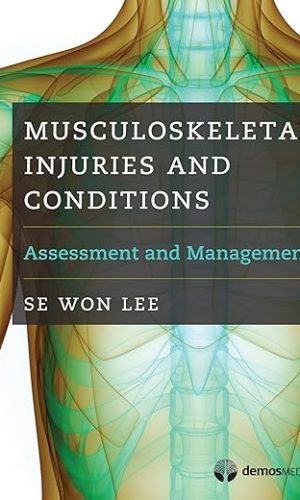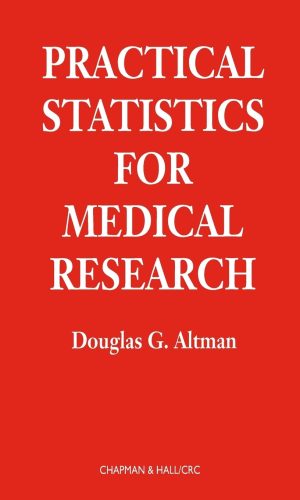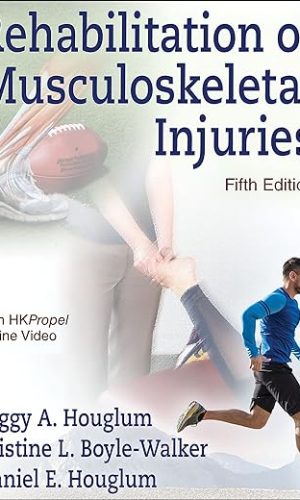Medicine & Health Sciences
-
Biomechanics of Injury
Biomechanics of Injury, Third Edition, explains the biomechanical principles of injury and how injuries affect the normal function of human anatomy. With a clear, accessible writing style and nearly 400 full-color photos and anatomy illustrations, it guides readers through the mechanical concepts of injuries without a heavy emphasis on mathematics.Previously titled Biomechanics of Musculoskeletal Injury, this third edition expands coverage of injuries beyond those of the musculoskeletal system to include the head, neck, and spine. Joining noted biomechanists Ronald Zernicke and William Whiting is concussion expert and athletic trainer Steven Broglio, who offers insights on head trauma and other neurological injuries. Unique in its evaluation of and appreciation for the intricacies of injury mechanisms, Biomechanics of Injury, Third Edition, comprehensively examines these issues:
- The mechanical aspects of injury and the concept of injury as a stimulus for beneficial tissue adaptations
- The effects of injury on the normal function of the human anatomy and joint mechanics
- Mechanical parameters such as force, stress and strain, stiffness, and elasticity and their application to tissue mechanics and injury
- How connective tissues respond to mechanical loading and how those tissues are studied to quantify their mechanical behavior
- Factors such as age, gender, nutrition, and exercise, with an emphasis on how lifestyle choices might lessen the chance or severity of injury
- How the principles of mechanical load and overload, use and overuse, level and progression of injury, and the many contributory factors involved in injury combine to form a backdrop for viewing specific injuries
Updated sidebars present a detailed analysis of anterior cruciate ligament injuries, rotator cuff pathologies, and concussion. In addition, the text discusses topics of current concern such as falls in older populations, throwing-related rotator cuff pathologies, and youth injuries from carrying backpacks.
Biomechanics of Injury, Third Edition, also employs learning aids to help readers understand and retain information. Objectives at the start of each chapter highlight the main concepts. Key terms appear in bold in the text and are defined in the glossary. Key Points at the end of each chapter summarize central concepts. Questions to Consider appear at the end of each chapter to test readers’ understanding and ability to apply the information presented. Updated Suggested Readings are included at the end of each chapter for readers who wish to dive deeper into selected topics.
Knowledge of the biological responses of tissues to mechanical loading improves our understanding of injury and its consequences. Biomechanics of Injury, Third Edition, will enable students and health professionals to reduce the likelihood that clients, patients, or athletes will experience painful and debilitating physical injury.
Read more
£78.90Biomechanics of Injury
£78.90 -
Musculoskeletal Injuries and Conditions: Assessment and Management
Musculoskeletal Injuries and Conditions: Assessment and Management is a practical guide to diagnosis and treatment of musculoskeletal conditions in clinical practice. More comprehensive than a handbook, yet more clinically-focused than a desk reference, this volume is a one-stop guide for clinicians who deal with musculoskeletal disorders and injuries in the practice setting.The book is organized by anatomic region, from neck to toe, and written in outline format. Each chapter concisely presents the basic knowledge that every practitioner needs to have at the ready in the outpatient clinical context. Taking a uniform approach based on isolating symptoms and the location of the pain, the book presents a uniquely practical template for non-operative management of a broad spectrum of musculoskeletal problems. All chapters include epidemiology, anatomy, biomechanics, physical examination, diagnostic studies, and treatment. Flowcharts for differential diagnosis and initial management are provided for chief complaints. Helpful tables, lists, and over 150 anatomic illustrations supplement the text throughout. Given the increasing importance of ultrasound in clinical decision-making at the point of care, a mini-atlas of normal and abnormal findings for common injuries is presented as part of the imaging work-up.
Designed to help busy practitioners diagnose and treat musculoskeletal disorders in the clinic or office, this book is an essential resource for physicians in rehabilitation and sports medicine, primary care, orthopedics, and other healthcare professionals who work in outpatient settings.
Key Features:
- Provides a consistent approach to managing common musculoskeletal conditions based on location of pain
- Bulleted format and clear heading structure make it easy to find information
- More than 30 flowcharts map out differential diagnosis, diagnostic approach, and initial management strategy for each complaint
- Packed with useful tables, lists, and over 150 illustrations of surface anatomy
- Integrates musculoskeletal ultrasound into the imaging workup, with over 40 normal and abnormal scans to aid in recognizing signature pathologies at the point of care
- Purchase includes free access to the fully-searchable downloadable e-book with image bank
Read more
£84.60£87.90 -
Practical Statistics for Medical Research: 12 (Chapman & Hall/CRC Texts in Statistical Science)
Most medical researchers, whether clinical or non-clinical, receive some background in statistics as undergraduates. However, it is most often brief, a long time ago, and largely forgotten by the time it is needed. Furthermore, many introductory texts fall short of adequately explaining the underlying concepts of statistics, and often are divorced from the reality of conducting and assessing medical research. Practical Statistics for Medical Research is a problem-based text for medical researchers, medical students, and others in the medical arena who need to use statistics but have no specialized mathematics background.
- Explores topics of particular importance in clinical practice, including diagnostic tests, method comparison, and observer agreement
- Utilizes real data throughout and includes dozens of interesting data sets
- Discusses the use and misuse of statistics, enabling readers to judge the appropriateness of methods and interpretations published in medical journals
- Describes the main statistical methods for comparing data collected from different groups of individuals or for relating different observations from the same people
- Provides many problems, all with detailed solutions
The author draws on twenty years of experience as a consulting medical statistician to provide clear explanations to key statistical concepts, with a firm emphasis on practical aspects of designing and analyzing medical research. The text gives special attention to the presentation and interpretation of results and the many real problems that arise in medical research.
Read more
£98.00£104.50 -
Rehabilitation of Musculoskeletal Injuries
Rehabilitation of Musculoskeletal Injuries, Fifth Edition With HKPropel Online Video, presents foundational concepts that support a thorough understanding of therapeutic interventions and rehabilitative techniques. Updated with the latest research in evidence-based practice, this text prepares students for careers in health care while serving as a valuable reference for experienced clinicians. Readers will learn what to expect when treating clients, how to apply evidence-based knowledge, and how to customize individual rehab programs. Related online video demonstrates 47 of the most challenging or novel techniques and can be used in the classroom or in everyday practice.Titled Therapeutic Exercise for Musculoskeletal Injuries in previous editions, the revised title supports the advancement of the field and better reflects the concepts and understanding of total rehabilitation of the patient. The content featured in Rehabilitation of Musculoskeletal Injuries aligns with the accreditation standards of the Board of Certification (BOC) and prepares students for the BOC athletic trainers’ exam. Respected clinician Peggy A. Houglum, who has more than 50 years of experience in the field, leads the expert author team to provide evidence-based perspectives, updated theories, and real-world applications. The latest edition is enhanced with contributions from new authors Daniel E. Houglum and Kristine L. Boyle-Walker, who have over 54 combined years of experience as athletic trainers, physical therapists, and instructors.
The fifth edition of Rehabilitation of Musculoskeletal Injuries places a greater emphasis on higher-order skills. Although it continues to present therapeutic exercise interventions, added content includes the other aspects of rehabilitation that would be applied to patients in clinical situations, including therapeutic interventions of modalities. Specific aspects of examination that are necessary to designing a rehabilitation program are also included. This edition also includes a new section on joint manipulation and a new chapter on functional adaptations in rehabilitation that focuses on providing emotional support as well as physical support in helping patients return to activities of daily living. Video content is expanded with 11 new clips that highlight therapeutic techniques, and more than 450 color photos and 750 illustrations help to enhance comprehension and clarify complicated concepts.
Rehabilitation of Musculoskeletal Injuries, Fifth Edition, provides thorough coverage of healing concepts, examination, and assessment techniques, ensuring students move from a solid understanding of the foundational skills and knowledge required of clinicians to comprehension of advanced problem-solving skills to make reliable rehabilitation decisions. The text demonstrates how to create rehabilitation programs using various modalities, manual therapy, and therapeutic exercise, and it highlights special considerations and applications for specific body regions.
Learning aids include case studies that emphasize practical application, Evidence in Rehabilitation sidebars that focus on peer-reviewed research and its practical application, and Clinical Tips that illustrate key points in each chapter. Additional learning aids include chapter objectives, lab activities, key terms, critical thinking questions, and references. For maximum flexibility to match course needs, instructors wanting to teach specific topics can adopt particular chapters or sections of the book through the Human Kinetics custom ebook program.
Note: A code for accessing online videos is included with this ebook.
Read more
£107.40




